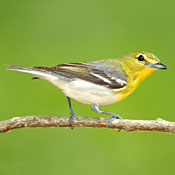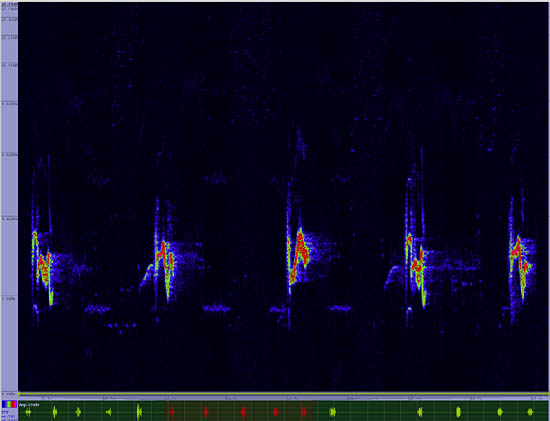Yellow-throated Vireo
Vireo flavifrons

Perching

Length: 6 in. (14 cm )
Usually seen low in shrubs and undergrowth vegetation of open forest and forest edge, this vireo places its deep, cup-like nest in the fork of a small branch in a tall shrub or low tree. The nest is made of grass, insect and spider webbing and lichens. Food is almost solely insects during the spring and summer, but berries and small fruits are added to the diet in the fall and winter.
The four-digit banding code is YTVI.
Bibliographic details:
- Article: Yellow-throated Vireo
- Author(s): Dr. Biology
- Publisher: Arizona State University School of Life Sciences Ask A Biologist
- Site name: ASU - Ask A Biologist
- Date published:
- Date accessed:
- Link: https://askabiologist.asu.edu/activities/bird/yellow-throated-vireo
APA Style
Dr. Biology. (). Yellow-throated Vireo. ASU - Ask A Biologist. Retrieved from https://askabiologist.asu.edu/activities/bird/yellow-throated-vireo
Chicago Manual of Style
Dr. Biology. "Yellow-throated Vireo". ASU - Ask A Biologist. . https://askabiologist.asu.edu/activities/bird/yellow-throated-vireo
Dr. Biology. "Yellow-throated Vireo". ASU - Ask A Biologist. . ASU - Ask A Biologist, Web. https://askabiologist.asu.edu/activities/bird/yellow-throated-vireo
MLA 2017 Style
Be Part of
Ask A Biologist
By volunteering, or simply sending us feedback on the site. Scientists, teachers, writers, illustrators, and translators are all important to the program. If you are interested in helping with the website we have a Volunteers page to get the process started.







